| |
the tiny hatha yoga philosophy
|
 |
The Tiny Hatha Yoga Philosophy by Shannon Frances
|
|
print:
 epub: epub: 
|
|
Preview
Small enough to be conveniently carried in a yoga-mat bag, this book provides a concise philosophical introduction to the fantastically, enormously, mind bogglingly diverse set of practices we refer to as yoga — focusing on many kinds of hatha yoga practiced today and their origins. Intended for beginning students, advanced students who do not have time to read a lot of yoga books and yoga teachers who want accessible answers to their studentís questions, it is organized around questions frequently asked by beginners. At the end of each topic, additional questions spark further interest and self reflection.
Available as a printed book from www.lulu.com, other online book sellers and your local bookstore.
print ISBN: 978-1-304-61705-7
electronic ISBN: 978-1-304-79269-3
|
|
Reviews for The Tiny Hatha Yoga Philosophy
"At only 65 pages, this lovely introduction to all things yogic, apart from asana, lives up to the title. Two pages are devoted to each of the 23 topics, such as What is raja yoga? What is prana? What is shatkarma? Is yoga a religion? It is really for the student starting to wonder if there's more to yoga than the physical practice."
— Frances Gairns, Namaskar
|
|
Explaination of selected illustrations
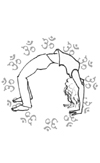 |
|
The wheel pose (chakrasana) is a typical asana for intermediate hatha yoga students. The symbol in the background is OM written in Sanskrit. |
 |
|
The elephant-headed individual in the center is Ganesha, a very popular god in the Hindu pantheon. Yoga is available to everyone, regardless of their religious orientation. |
 |
|
The iconic chin mudra is often used during meditation and pranayama. |
 |
|
The neti pot is used to rinse the frontal sinuses by pouring salted water into one nostril and letting it drain out the other. |
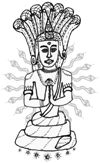 |
|
Patanjali, the compiler of the Yoga Sutras, is often depicted with a protective umbrella made by a multi headed snake. |
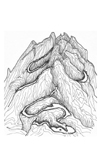 |
|
The mountain is an analogy for yoga: many kinds of yoga are all paths leading to the same goal. |
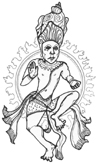 |
|
In the Bhagavad gita, the god Shiva teaches karma yoga. |
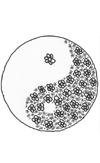 |
|
The yin yang is a symbol used all over the world to represent the balance of opposites. |
|
|